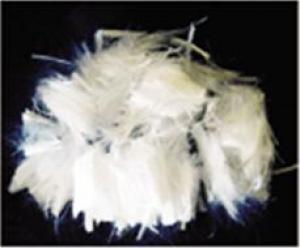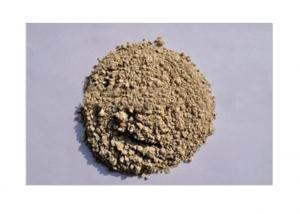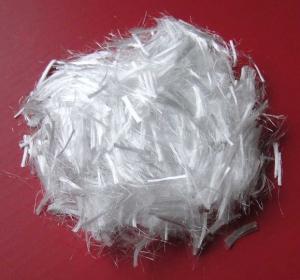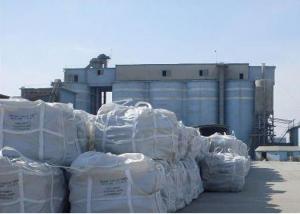Industrial PP Fiber for Concrete,Engineering Fiber
- Loading Port:
- China Main Port
- Payment Terms:
- TT or L/C
- Min Order Qty:
- 3000 Kgs kg
- Supply Capability:
- 100000 Tons Per Year kg/month
OKorder Service Pledge
OKorder Financial Service
You Might Also Like
Commodity: Industrial PP Fiber for Concrete, Engineering Fiber
PP fiber,also called Polypropylene PP Fiber, Polymer Fiber,it is manufactured by mixing, spinning, stretching and cutting the combination of modified base and polypropylene paring, used as the project fiber for concrete and mortar. It can decrease cracks in concrete's early stage.
Property:
| Polypropylene monofilament fiber technical | ||
| Item | Product name | PP fiber |
| 1 | Material | 100% polypropylene |
| 2 | Cut length | From 3mm to 120mm |
| 3 | density | 0.91g/cm³ |
| 4 | Diameter | 20 micron to 40micron |
| 5 | Strength | 400-600Mpa |
| 6 | elongation at break | 30%-40% |
| 7 | melting point | 170°C |
| 8 | ignition point | 590°C |
| 9 | Oil point | lower than 1% |
| 10 | Water-hygroscopicity | No |
Advantages of Industrial PP Fiber for Concrete:
Good dispersancy, better grip
Random dispersal, subordination reinforced
Physically-added tendon, anti-crack and high reinforcement
Diamagnestism and antirust, corrosion protection and alkali resistant
Innocuous and odorless, safe
Simple operation, more economic and dependable
Function of Industrial PP Fiber for Concrete:
Anti-crack
Increasing seepage-proof performance
Anti-concussion and anti-wear performance
Increasing shock proof
Cold-resistant property
Enhance the property of toughness and ductility
Fire resistance and anti-detonation quality
Preventing or reducing the major reinforcing steel bar from being eroded
Reducing rebound of jetting concrete
Application:
Industry and Civil Architecture
Main body of road, bridge
Water conservancy project
Package:
A: Packing in plastic bags, plastics bags to be put into waterproof bags, and then waterproof bags to be put into container, totally 8 tons in 1x20'FCL
B: Packing in fusible paper bags, paper bags to be put into cartons, and then cartons to be put into pallet, pallets to be put into container, totally 6 tons in 1x20'FCL.



- Q: The fence is typical 47 inch wire field fencing. I am putting it on a one acre lot with the post being placed every 15 feet. I am using landscaping post as they are cheaper then regular post and i have worked with them before on my stockade fencing with no problem. I am installing two 10 foot farm gates which are 1 and 3/4 inch tubular steel. I will be using 4x4 pressure treated post on the 4 corners and the post holding the gates.I need to know how much concrete i would need for the 60 land scaping post and the 6 4x4 post. I am figuring one 60 pound bag of cement (the kind you get for about $2.50 a bag) for every two landscaping post and one full bag for each of the 4x4 post giving me a total of 36 bags. I am presently not planning on adding any stones to the mix, just water.The post will be 2 feet in the ground and 6 feet above. Barb wire across the top.Does this sound right or am way off on how many post will do one bag? The total feet of fencing is 900 feet.
- Cement is good, but we like to use crushed stone on all our fences that we install (if it is wood). Reason being, the crushed stone allows the water to drain away from the wood and you get less rot over the course of time than you would with cement. Also, once you set the post in cement, it is a royal pain to remove/adjust. Not to mention the ease of having buckets of crushed stone instead of having to mix cement and all the hastle which goes along with that. just a thought
- Q: How Fireproof Is Cement? I Tryed To Make A Mold For Metal Casting Out Of It, But It Fell To Pieces. Did I Make It Wrong, Or Is Cement No Good For 1100?C+ ??
- It depends on how long it has been there, and if removing the section would make the driveway unusable. If it has been there a long time, you are not likely to be able to do anything about it. There are several doctrines that would make this so. If you want to get a portion removed, i would talk to them first. If they get a lawyer, you will be fighting this for a long time, so it is best to just try diplomacy first. Whatever you do, don't go out there with a jackhammer and start breaking concrete. This is a great way to end up in bigger trouble. Before you start, you will need an accurate survey as well.
- Q: And no, I'm not talking about rubber cement. I need to glue a multitude of hard rubberized toy dinosaurs to various urban materials, mainly concrete or cement. What would be the best glue to use with the strongest and longest lasting bond? Epoxy? And if so, what kind of epoxy?
- Superglue will fail at the slightest touch. Epoxy would work, but you would have to sit there and wait for each one to cure. Try a caulking gun with a tube of construction adhesive.
- Q: How much to fix cement steps?
- Use the Following Steps to fix cement steps : Remove Loose Pieces and Debris Pressure Wash the Cement Tape Off the Edges Prepare the Cement Patch Mix Apply the Cement Mix Fill the Holes Add a Second Coat Create a Wetter Consistency Spray Water Use a Cement Finishing Broom Work the Cement Into the Pores Add the Skim Coat Shape the Rounded Portions
- Q: As in many modern houses, our en-suite shower is made up of tiles fixed onto plaster board. Over the years this has started to leak as the grouting failed, and the plaster board has become soggy and needs replacing. We have had two suggestions from different builders. One suggests ripping out the old plaster board and replacing it with quot;cement boardquot; onto which tiles would be stuck. The other suggestion involves cutting out the old plaster board, replacing it with new plaster board which would then be quot;sealedquot; before tiles are stuck onto it. Does anyone know which of these would be the better option please? Costs of both proposals appear to be similar so we really want the better engineering solution.
- Remove the old plaster or green board and install 1/2 inch Durock(cement board). Then stick the tile to the new cement board.
- Q: We just bought a 15' x 48quot; metal-frame above ground pool and we heard that it can crack the cement!!
- Whoever you purchase the pool from will the two setting up it in the different case they're going to advise a organisation to do it. consistently ask the fee of the pool , PLUS setting up, or does the fee contain the setting up.
- Q: what is the definition of cement? I know the cement but I want to know the exact definition in engineering vie?
- Cement is a very general and vague term. Perhaps you mean Portland Cement ? Any glue can be labeled cement, as it binds things together. wikipedia: In the most general sense of the word, a cement is a binder, a substance which sets and hardens independently, and can bind other materials together. The word cement traces to the Romans, who used the term opus caementicium to describe masonry which resembled concrete and was made from crushed rock with burnt lime as binder. The volcanic ash and pulverized brick additives which were added to the burnt lime to obtain a hydraulic binder were later referred to as cementum, cimentum, c?ment and cement. Cements used in construction are characterized as hydraulic or non-hydraulic.
- Q: I would like to do building cement business, there are also sales in this area, I would like to ask this is not a lot of money is also a lot of money. In the sales side of this relationship has a relationship between the Department of the production of a large real estate company, I would like to have no problem and then there is a commodity concrete company. I would like to ask if this is not a lot of money to pay the money will be very powerful. More
- Look at your money is not back fast, but also how much the amount of a ton of cement is hundreds of pieces, one hundred tons also tens of thousands of pieces
- Q: I really want my hair to grow ! it is a little past my shoulders very thick ! I'm so sick of it ,this length. it feels like Ive had this length for forever. So my friend bought so hair cement for her hair, I was thinking about buying some for me! does it work? is it expensive? My main question is does it workk period? Hope to hear from you ! :)
- No. Hair has its own timetable and a heavy duty setting gel will not make it grow faster. Hair cement is a heavy duty hair styling product designed to hold hair in just about any position with stiff results, withstanding wind, light rain, and even sleep. It can defy gravity and is specifically made for spike-type hair styles. This styling product is a paste-like substance that is delivered most commonly in a tube or a pot, but some manufacturers carry the product in a spray bottle or foam canister. Some brands include a temporary color in the paste, which can add a fun touch of color to a hairstyle.
- Q: im bulding a skateboard bowl in my backyard and i need some info
- The best cement is Portland Cement and it generally sells for about $10.00 a bag. ( there is about 90 pounds in a bag) The best mixture for cement. You need sand, gravel, and bags of cement. Mix 3 parts gravel, 2 parts sand, 1 part cement and water, until you have the consistancy of cake batter.
1. Manufacturer Overview
| Location | Shanxi, China |
| Year Established | 1982 |
| Annual Output Value | Above US$ 30 Million |
| Main Markets | 20.00% North America 20.00% South America 10.00% Eastern Europe 10.00% Southeast Asia 10.00% Northern Europe 10.00% South Asia 10.00% Western Europe 5.00% Africa 5.00% Mid East |
| Company Certifications | ISO9001:2000 |
2. Manufacturer Certificates
| a) Certification Name | |
| Range | |
| Reference | |
| Validity Period |
3. Manufacturer Capability
| a) Trade Capacity | |
| Nearest Port | Shanghai Port, China |
| Export Percentage | 41-50% |
| No.of Employees in Trade Department | 20-30 People |
| Language Spoken: | English; Chinese; |
| b) Factory Information | |
| Factory Size: | Above 50,000 square meters |
| No. of Production Lines | Above 10 |
| Contract Manufacturing | Design Service Offered; Buyer Label Offered |
| Product Price Range | High; Average |
Send your message to us
Industrial PP Fiber for Concrete,Engineering Fiber
- Loading Port:
- China Main Port
- Payment Terms:
- TT or L/C
- Min Order Qty:
- 3000 Kgs kg
- Supply Capability:
- 100000 Tons Per Year kg/month
OKorder Service Pledge
OKorder Financial Service
Similar products
Hot products
Hot Searches
Related keywords






























